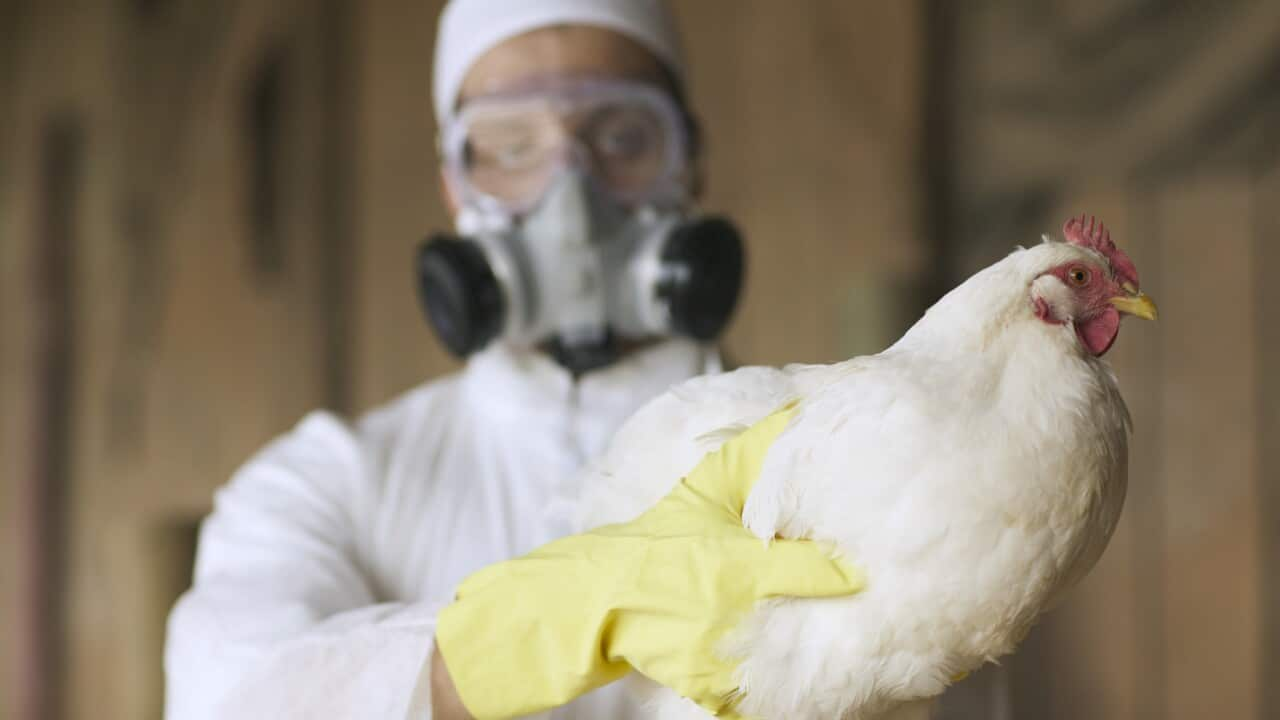Key Points
- The H5N1 strain of bird flu is spreading rapidly to new territories and species.
- It’s yet to reach Australia, which is surprising, according to one expert.
- The strain is rarely seen in humans though the mortality rate is high.
So which animals are most at risk and how can we protect them? How dangerous is H5N1 for humans? And when is it expected to arrive in Australia?
Which animals has H5N1 impacted?
Cows and goats joined the list last month – a surprising development for experts because they were not thought to be susceptible to this type of influenza.

The H5N1 bird flu strain has now been found in marine animals, cows and goats. Source: AAP / Charlie Litchfield/AP
“Bird-to-cow, cow-to-cow and cow-to-bird transmission have also been registered during these current outbreaks, which suggest that the virus may have found other routes of transition than we previously understood,” Wenqing Zhang, head of the global influenza program at the World Health Organization, told a media briefing in Geneva.
“The more mammalian species that we see infected, the more likely we are to see mammalian adaptations.”
Is H5N1 in Australia and what damage could it do?
“I’m perplexed as to why it’s not here at the moment, and I’m hoping that that’s a really positive sign, but I don’t think we can bank on that. All it takes is a few wayward birds.”

The H5N1 strain of bird flu is spreading rapidly, appearing in new territories and new animal species.
If it did arrive on our shores, H5N1 could cause significant disease among our wild birds and marine life, she added.
“We did a study a couple of years back showing that black swans are really, really susceptible and it would be devastating if we lost them as a species.”
How much are humans at risk from H5N1?
It was only the second case of a human testing positive for bird flu in the United States, and came after the virus sickened herds that were apparently exposed to wild birds.
The virus may have found other routes of transition than we previously understood.
Wenqing Zhang, head of the global influenza programme at the World Health Organization
Short said the risk to humans at this point is “relatively low but still there”.

It’s possible that H5N1 could one day be able to transmit efficiently between humans. Source: AAP
“This virus has been around since the late nineties and it’s never been able to transmit efficiently from human to human.
“Whether or not that will change in the future, I don’t know.”
Is there a bird flu vaccine?
“We are working on new vaccine strategies that can be rapidly rolled out specifically for this virus,” Short explained. “There’s a lot of really active research going on about this specific strain so that if something does happen, we are prepared. “
What about H5N1 in milk?
The virus has also been detected in raw milk from infected animals in “very high virus concentrations”, Zhang said, but experts were still investigating exactly how long the virus is able to survive in milk.

Bird flu strain H5N1 has been found in raw milk taken from infected animals. Source: Getty / Getty Images
The Texas health department has said the cattle infections do not present a concern for the commercial milk supply, as dairies are required to destroy milk from sick cows. Pasteurisation also kills the virus.
“It is important for people to ensure safe food practices, including consuming only pasteurised milk and milk products,” Zhang said.
What can Australians do?
– With Agence France-Presse
